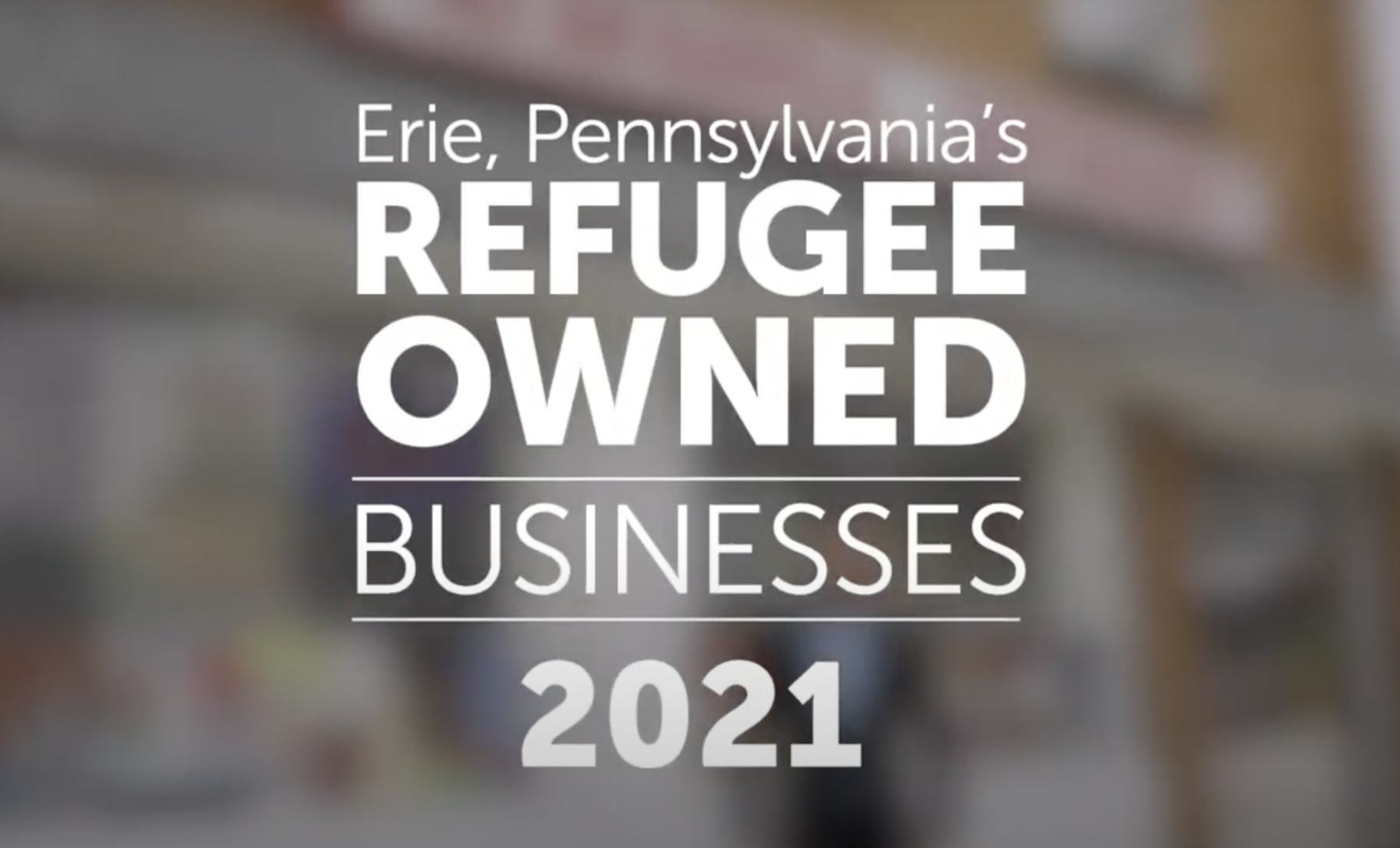The stories of immigrants and refugees and the impact they have in and on the places they live throughout the United States has been and continues to be an important topic of exploration in the Our Towns canon. The impacts these residents have on their local economies, education, and more, as well as the hardships and challenges still faced today, are seen countrywide, from Burlington, Vermont to Sioux Falls, South Dakota and in many towns and cities in between and beyond.
Take Erie, Pennsylvania, for instance. This is a “for instance” we often use in this space, in part because of the many ways in which Erie epitomizes the challenges, and the opportunities, for the country as a whole as post-pandemic recovery begins.
Like many medium-sized industrial- or farming-region communities, Erie, for various reasons, has lost population over the decades. At its peak in 1970s, nearly 140,000 called Erie home. Today, fewer than 100,000 reside in this, Pennsylvania’s fourth largest city. (After Philadelphia, Pittsburgh, and Allentown.)
But even as the overall population has shrunk, it has grown more diverse. Because of its success as a resettlement city for refugees, Erie in 2020 the nonprofit organization Welcoming America honored Erie as one the nation’s “Welcoming Cities.”
“The people of Erie, Pennsylvania, have welcomed immigrants and refugees, and believe that their town is better off for having done so,” Deborah Fallows wrote in October 2016 for The Atlantic. In February 2017, James Fallows wrote about an exhibit launched by the Erie Reader, the region’s alt. weekly, that featured New Americans in the Rust Belt, photographed by Maitham Basha-Agha, an Iraqi-American living in Erie at the time.
That exhibit went on to become a short documentary by the same name, featuring Basha-Agha interviewing immigrants and refugees in Erie that was produced and shot by MenajErie Studio.
“Erie’s diversity is one of our community’s greatest comparative and competitive advantages,” says Patrick Fisher, the Executive Director of Erie Arts & Culture, the regional arts agency for Northwestern Pennsylvania.
To celebrate World Refugee Day in 2021 in Erie, Erie Arts & Culture partnered with MenajErie Studio to produce a video that highlights three New American food markets located in the city’s urban core that are owned and operated by former refugees. Fisher leveraged funds from the Erie Community Foundation and the Doris Duke Charitable Foundation for Islamic Arts for the project.
You can watch the video on Erie Arts & Culture’s website and here on YouTube:
“By providing fresh food options, these markets offer healthy alternatives in areas that would otherwise be food deserts,” says MenajErie managing partner, producer, and director Jessica Taylor. “It is important that we help spread the word about these stores so that people in our community are aware and encouraged to shop there regardless of their cultural background.”
The video features Almadina Supermarket, located at 2325 Parade Street; Peace African Market at 1154 East 26th St.; and All in One Market at 3304 Pine Avenue.
In the video, Murtada Al-Saad, manager of Almadina, discusses how his life as a first-generation American differs from his parents’ as they fled war-regions of Iraq.
“I think we’re a perfect example of what refugees do,” he says. “We come out of difficult situations, and we come to build on a new life here in the U.S.”
Yakaremye Omari, owner of Peace Traditional African Market, recounts leaving Burundi at the age of 4 and then spent the next 18 years in a refugee camp. There, he would walk around selling peanuts and eggs, getting his first taste of running a business.

“I think in Erie there is a great community,” he says. “When I opened the store there was a lot of offices I went to and every door I knock on they open. They always welcomed me.”
Gopi Chuwan, co-owner of All in One Supermarket, explains the name behind his family-run business. They wanted to ensure people in the community who have a place to get everything they need – from groceries to cultural dress – in one place, thus: All in One.

“We are lucky to be here in the United States,” says Chuwan, who’s originally from Bhutan but spent 20 years in Nepal as a refugee before coming the United States. “We arrive in Erie first, so it’s our hometown.”
In each store, the array of goods is as expansive as it is impressive. From the commonly used seasonings in everyday cuisine to the hard-to-find-in-U.S.-based-chain-store spices, from cultural attire to name-brand candies, the shelves, as the video captures, are stocked with both the expected and unexpected.
“Erie Arts & Culture wants to highlight the culture present in our community, using food markets as the vehicle to share and explore cultural diversity, while also promoting New American owned food markets as assets present in our community that can help us overcome food scarcity issues being experienced within historically under-resourced neighborhoods,” Fisher says.
In addition to the video, Erie Arts & Culture published an updated directory of small businesses owned by former refugees – where you’ll find various corners of the world all calling Erie home.




